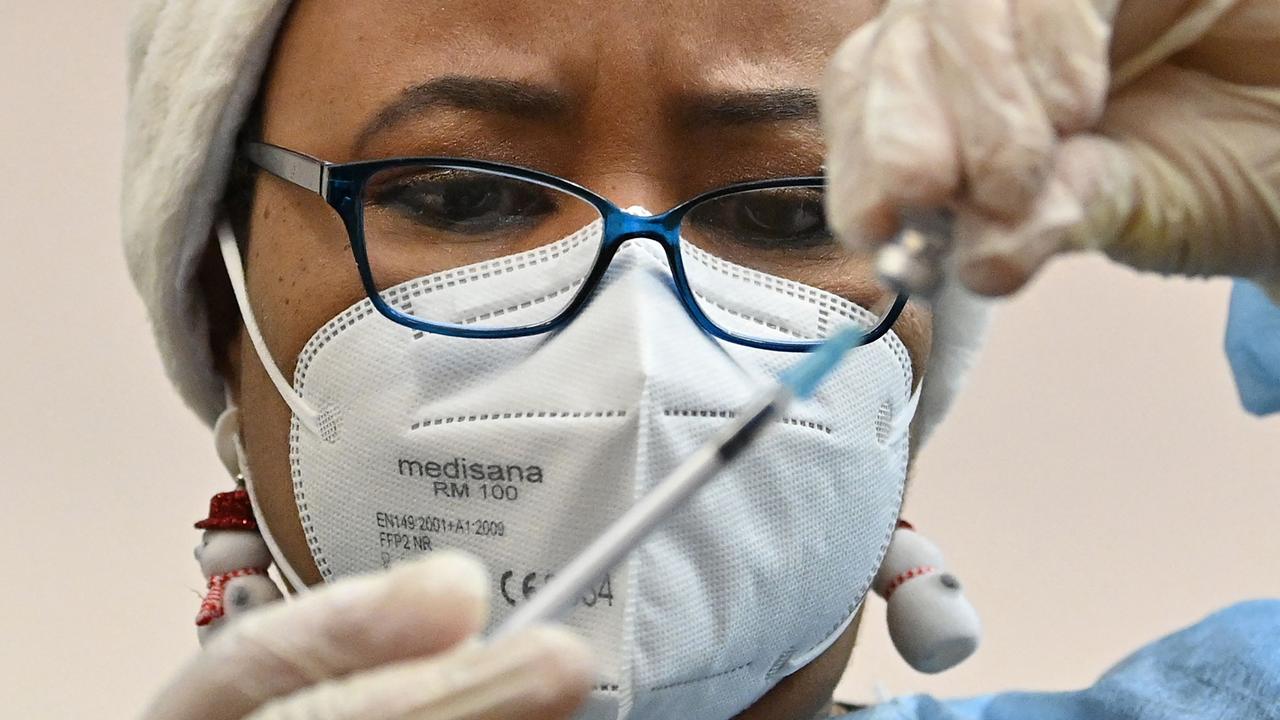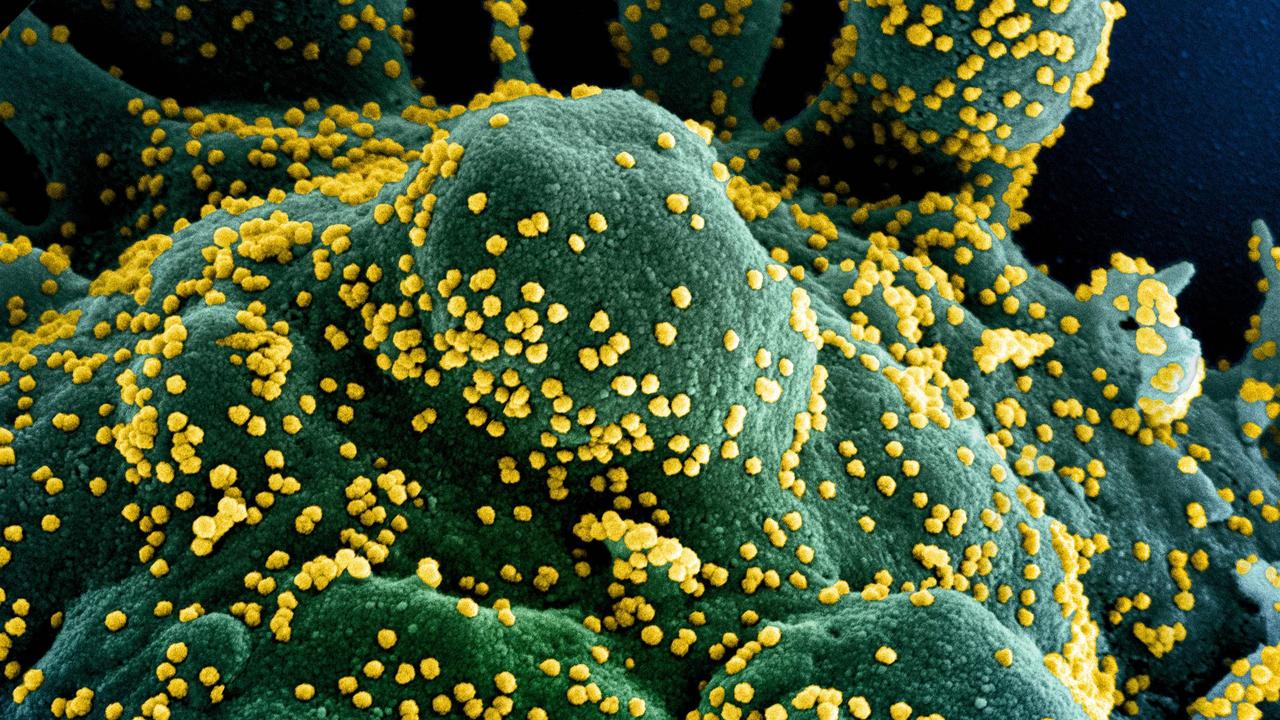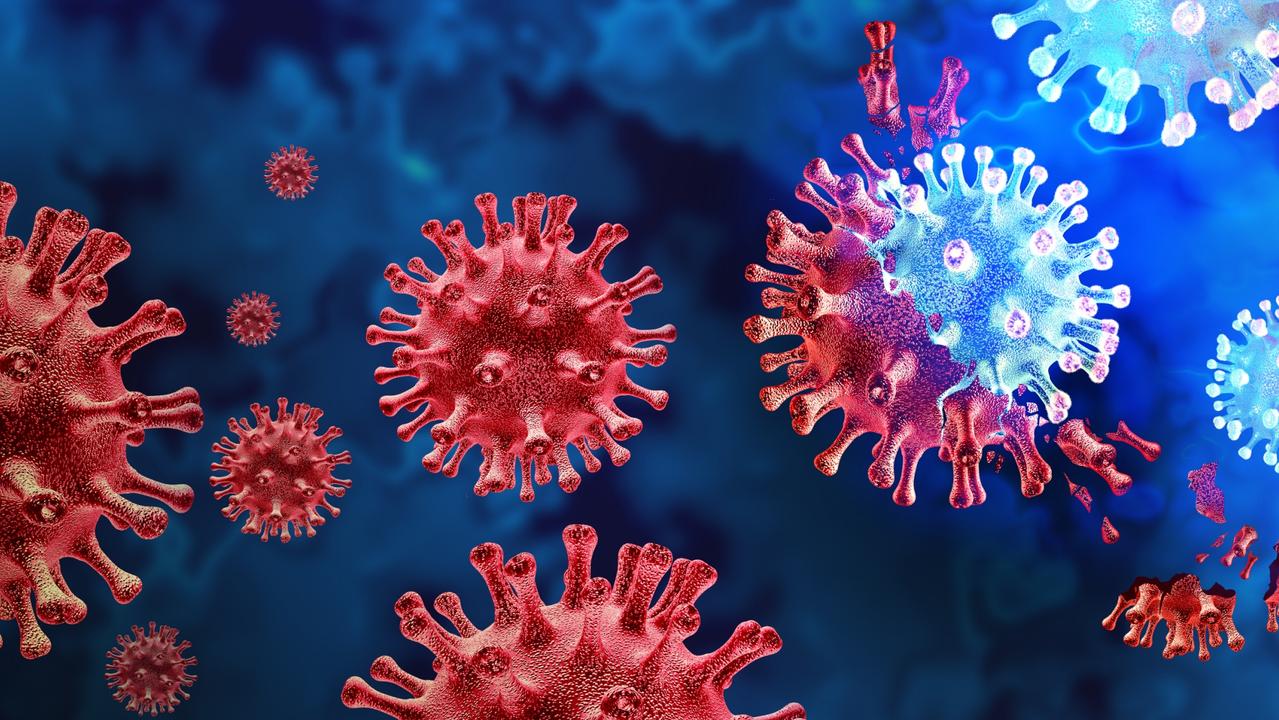Coronavirus: Chilling picture shows UK hospitals at breaking point
A chilling photo of a temporary mortuary in action as hospitals reach capacity shows just how dire the UK’s COVID-19 situation has become.
A chilling photo has underlined just how close to breaking point UK hospitals really are, with at least 18 institutions officially on the brink of being overwhelmed.
The image from Monday shows staff hard at work at a temporary mortuary in Leatherhead in Surrey, southeast England. The facility, which was set up in April, is now holding 170 bodies after the region’s hospital morgues reached their capacity of 600.
There are currently more than 30,000 patients in hospital with COVID-19 in the UK, and more than 3,000 on ventilation. The highest number during the April peak was just over 20,000.
More than 4,000 patients were admitted in 24 hours according to the latest daily figure from last week, the highest in the pandemic so far.
RELATED: Two weeks until London overwhelmed
RELATED: Partner of Qld hotel worker has virus
At least 18 hospitals in England’s Midlands and South East have reached CRITCON level three, which means they are “at full stretch”, according to National Health Service (NHS) data seen by the Health Service Journal (HSJ). There is only one category higher, the extremely rare level four, which means a hospital has been “overwhelmed” and may be forced to refuse critical care.
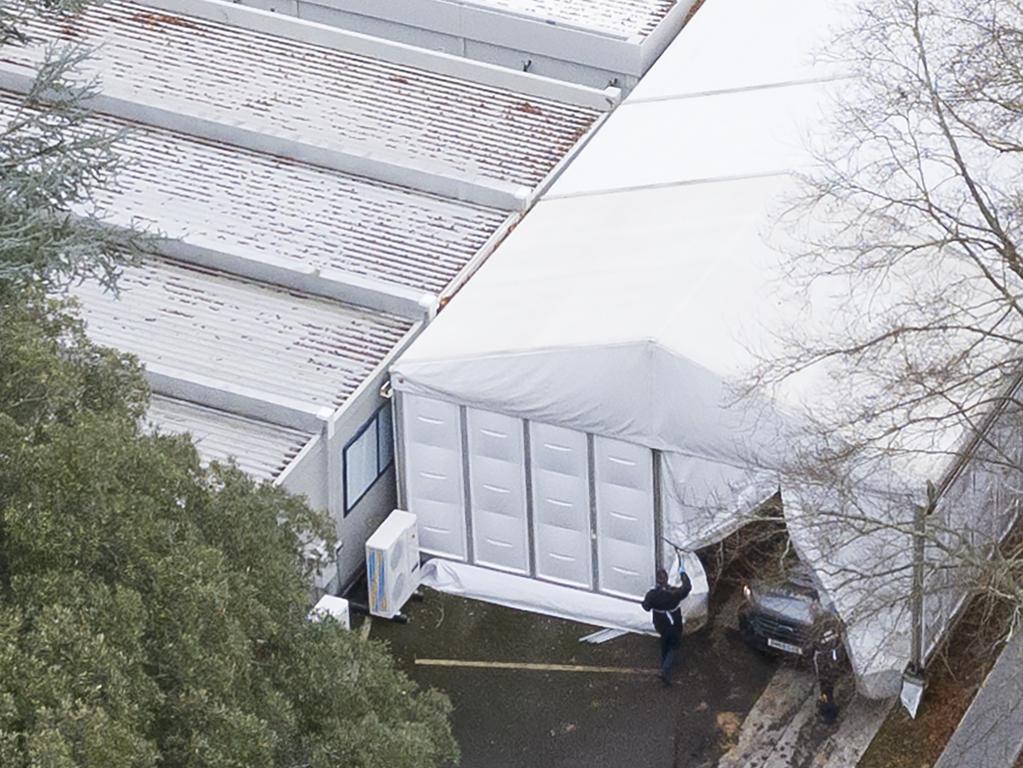
‘DETERIORATING QUICKLY’
Dr Paul Hunter, Professor in Medicine at University of East Anglia, told news.com.au that staff were reporting a “grim” situation — mostly in London but with other regions catching up.
“It is deteriorating quite quickly,” he said.
“The problem isn’t the beds, the problem is the nurses. There aren’t enough nurses, and doctors, to go around.
“It’s not only a recent thing, we’ve been running down our public health infection control services for pretty much two decades.”
Dr Hunter said there was “clearly a lot of burnout” adding that many nurses “look worn out in a way that I’ve rarely seen.”
“We have a lot of health care staff off because they have actually got COVID, or they are having to self isolate,” he added.

He said another reason the problem is more acute than it was earlier this year is because “people are surviving their hospital stays much better than they did back in April” thanks to better drugs and increased knowledge. While this is positive news, it also means more patients filling up wards and space running out fast, meaning some may not receive the care they need. Dr Hunter said that care homes were also now more reticent to take patients who have had COVID and put all their residents at risk after a surge of deaths this year, according to NHS staff.
Dr Hunter said case numbers will plateau eventually and may even be starting to flatten out, “but the only thing that is going to make any real difference is the vaccination programme.”
UK Prime Minister Boris Johnson said on Monday that 2.4 million people had now been given a shot as he visited a vaccination centre in southwestern England.
The UK is aiming for an ambitious target of inoculating 15 million of its most vulnerable populations by mid-February, to allow national lockdowns to ease.
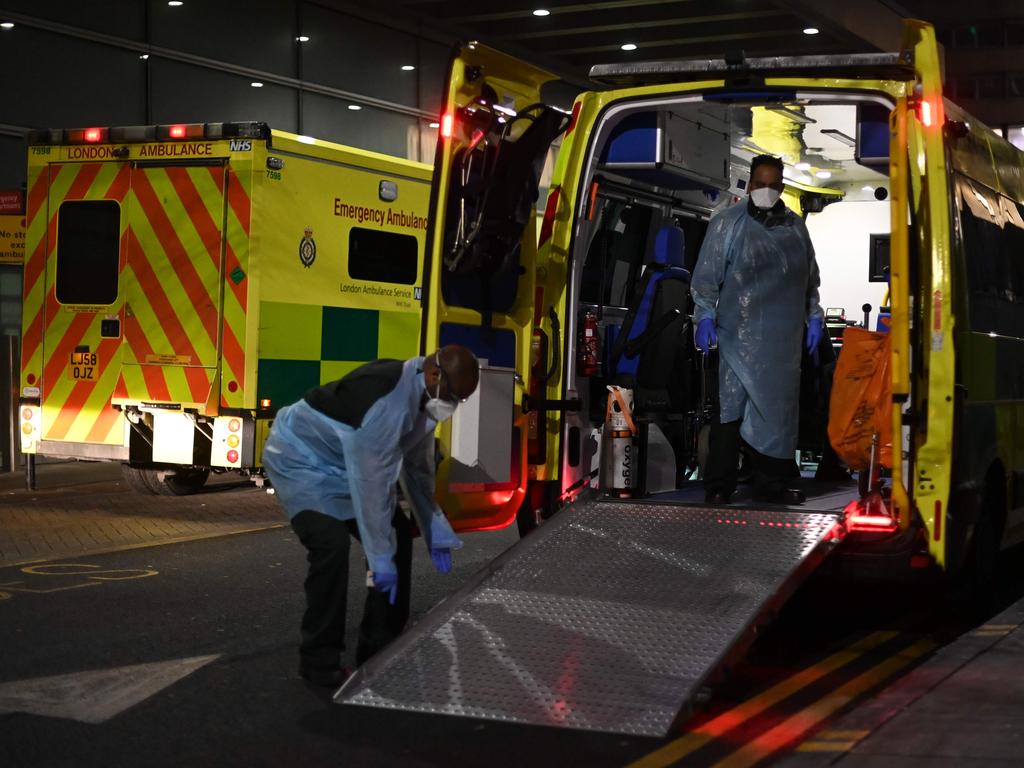
Dr Hunter said that England’s lockdown’s “primary function is to reduce this give more people the opportunity to have their first shot.”
But he warned: “There’s no guarantee that the vaccine is going to stop transmission.”
That could be a real problem for anyone who declines to be vaccinated, or cannot be vaccinated for health reasons.
‘UNTHINKABLE’ PRESSURE
Senior health officials have issued a warning over routine elective care continuing in the private sector while the NHS faces “unthinkable” pressures from coronavirus.
“We are genuinely in unprecedented times and the second wave of COVID-19 is putting pressure on the service that only a year ago would have been unthinkable,” NHS England's regional medical director and other senior leaders in London wrote in a letter to medical directors of London’s acute hospital trusts seen by the HSJ. They were asked not to support staff performing non-urgent work in the private sector for the next month.
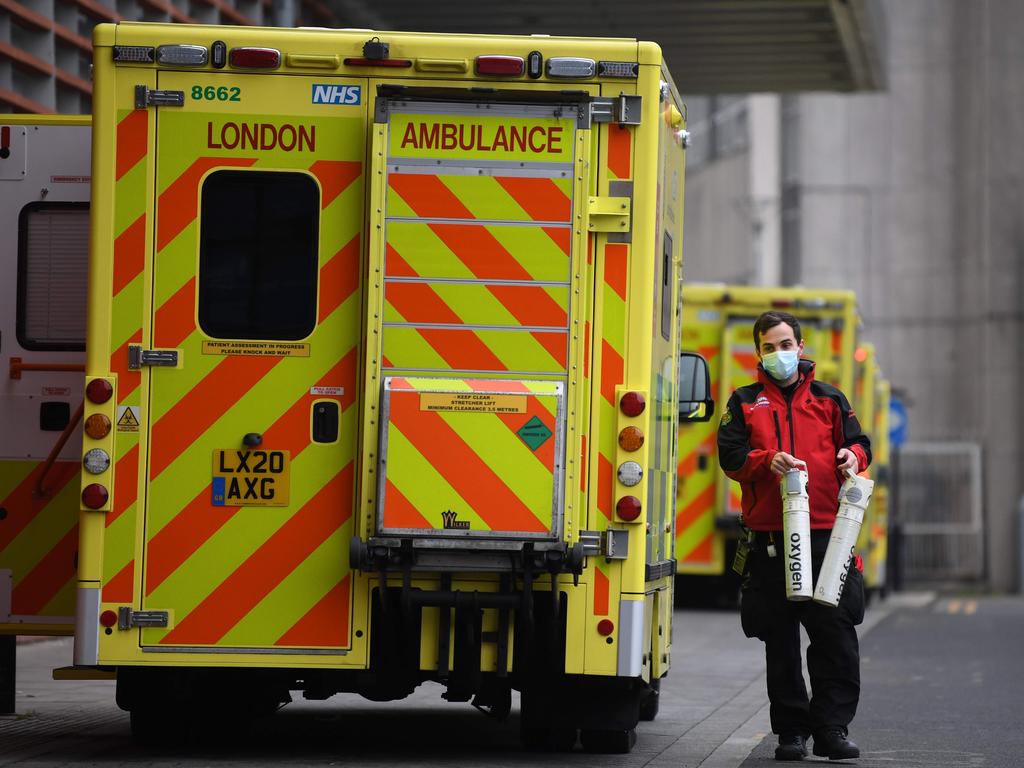
With its hospitals in a dire situation, Britain is racing to vaccinate its priority groups including the elderly and healthcare workers, even delaying the second doses required for full protection in order to give a first jab to as many people as possible.
UK Health Secretary Matt Hancock said Sunday that every adult in Britain will be offered a jab by autumn, as the UK reported a record 68,053 daily cases and 1,325 deaths Friday with England and Scotland in full lockdown. It has now reported more than 3 million cases and 80,000 deaths.
Government officials have suggested restrictions could be tightened even further, with Vaccines Minister Nadhim Zahawi telling Sky News that “enforcement” was paramount.
‘WORST WEEKS’ AHEAD
England’s Chief Medical Officer Chris Whitty told the BBC there was a “serious problem” with cases rising in every part of England.
He said “the next few weeks are going to be the worst weeks of this pandemic in terms of the numbers into the NHS”, warning that residents needed to “double down.”
“This is everybody’s problem,” he said, adding that “anybody who is not shocked” by the situation “has not understood this at all.”
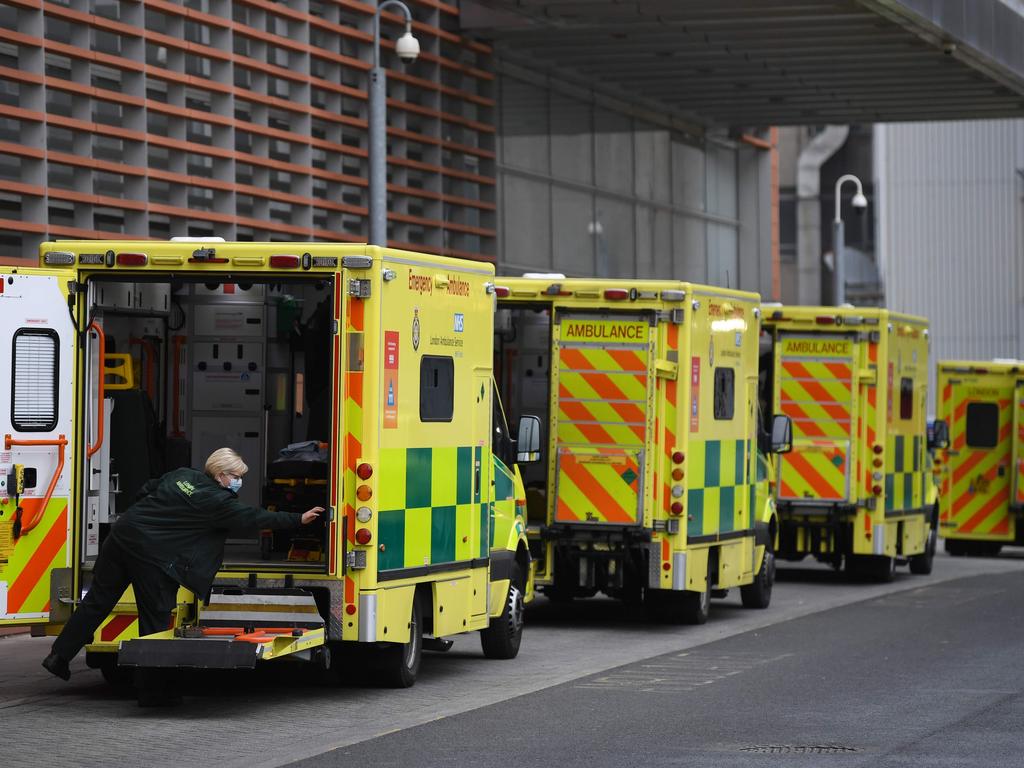
Dr Julian Tang, clinical virologist and honorary associate professor in the respiratory sciences department at the University of Leicester, told news.com.au that “particularly in London in southeast where they emerged to tier two not tier three, that enhanced social mixing in the pre-Christmas festive shopping period must have seeded a lot of virus”.
He said we were seeing this now with as many as one in 20 people in parts of London having coronavirus.
“So it’s not surprising at all that London and the South East are now bearing the brunt of this post Christmas amnesty, and probably there was a lot of illicit mixing and social gathering on New Year’s Eve as well.”
“The UK’s situation is much, much worse than Australia.”
He said that officials’ advice to enhance masking recommendations was coming “very late on in the UK pandemic.”
Dr Tang said the UK was seeing the results of social mixing at Christmas, and might still see a New Year peak of cases developing this week, and was battling the South African variant as well as the UK variant — another highly contagious mutant strain.
“This variant may not respond to the vaccine as well as the UK variant,” he added.
“We have a situation where the healthcare systems are really reaching the limit of their capacity.”

